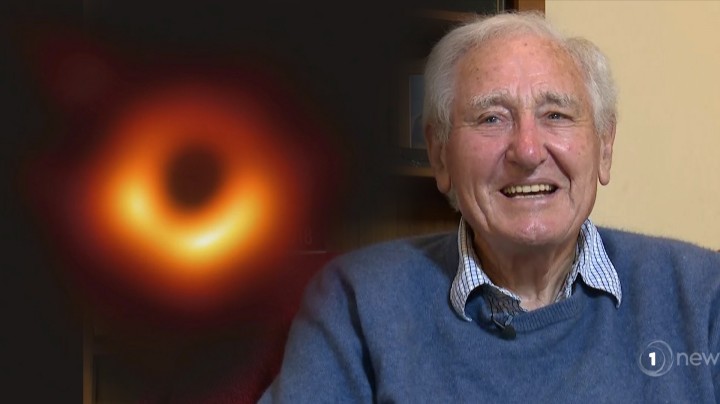
Waiting 56 years to be able to say, “I told you so” would be taxing for most of us. It must have been a fantastic feeling for Professor Roy Kerr when the boffins produced photographic evidence that he had got his sums correct all those years’ ago.
And now he is rewarded with the title ‘Fellow’. On ya, Roy.
Quote.An award-winning Tauranga mathematician, whose research into rotating black holes was recently proven, is to be made a Fellow of the Royal Society of London.
The first image ever captured of a black hole was publicly released on April 11, proving distinguished Canterbury Professor Roy Kerr’s 56-year-old concept theory.
The picture showed a halo of dust and gas, tracing the outline of a colossal black hole, at the heart of the Messier 87 galaxy, 55 million light years from Earth.
It has been heralded as red-letter day and a game-changing event for New Zealand science as it illustrated Kerr’s theory of rotating black holes.
In 1963, before advanced computers existed, Kerr used pen and papers to find the exact solution to Albert Einstein’s equations of general relativity for rotating black holes.End quote.
On July 12, Kerr will be made a Fellow of the Royal Society of London for his “exceptional contributions” to science, placing him among the world’s most eminent scientists.
Kerr is an eminent mathematician, known internationally for discovering the Kerr solution, an exact solution to Einstein’s field equation of general relativity.
The Royal Society has acknowledged Kerr’s work as being of “particular importance” to general relativistic astrophysics and said all subsequent detailed work on black holes fundamentally depended on his research.
Also for his other major contributions which include prescient work on algebraically special solutions of reduced holonomy,” the society said.
Speaking to the Bay of Plenty Times from his Tauranga home today, Kerr said he learned about the Fellow almost a month ago but was sworn to secrecy until now.
” I couldn’t even tell my closest colleagues. I’m so thrilled and excited to receive this honour,” he said.
Kerr, 84, said he was first nominated by other Fellows of the society about 30 years ago and was “excited” to finally be able to add Fellow to his name.
Becoming a Fellow helps to give Kerr’s work extra significance on the international stage.
Kerr said he hoped his research and scientific achievements helped to inspire others to pick up the mantle and follow in his footsteps.
“There is so much more work to do about black holes. It’s so fascinating. Such as we still have no idea what’s inside these black holes as a supernova collapses inwards,” he said. […]
Kerr’s discovery sparked a revolution in physics. At that time there was no consensus that such objects even existed; the term “black hole” was only coined in 1967.
A newspaper





